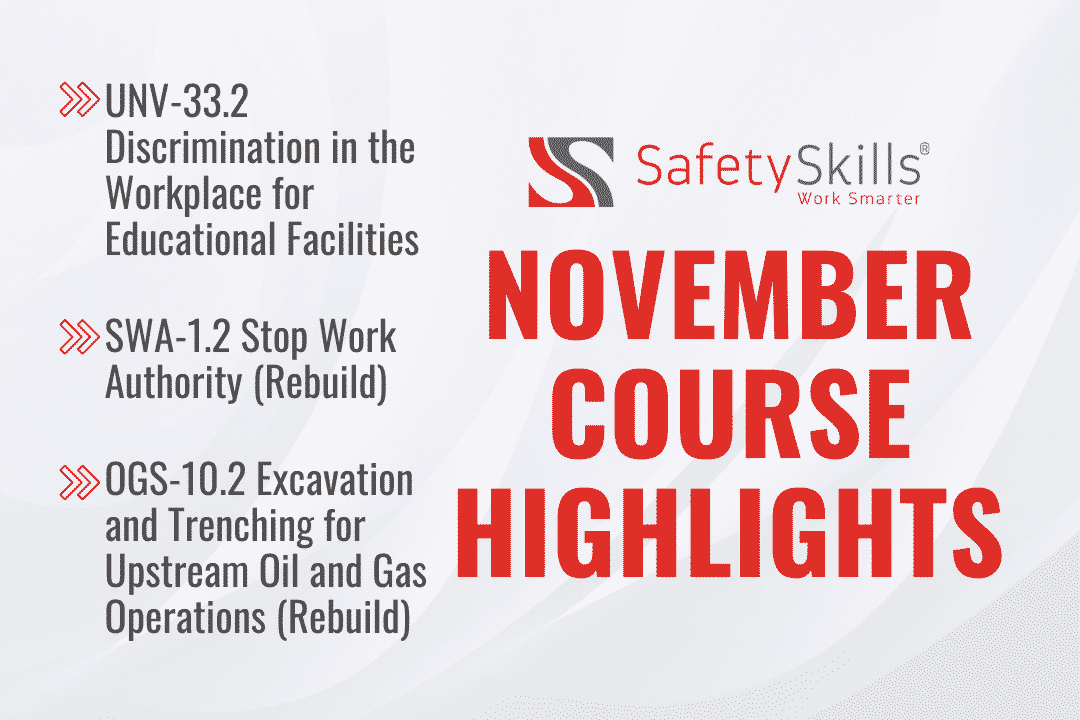UNV-33.2 Discrimination in the Workplace for Educational Facilities
Understanding discrimination and harassment is crucial when it comes to maintaining a safe recruitment process, work environment and healthy employee relationships. Discrimination can be defined as the practice of unfairly treating a person or group of people differently from others. U.S. federal law prohibits discrimination at any institution receiving federal funds.
Nevertheless, there is ample data showing discrimination and harassment continue in the modern workplace and education system. It is important all employees that are a part of educational institutions know and apply the laws in place to prevent discrimination.
In addition, harassment is considered a form of discrimination and is defined as behaviors that are offensive or unwanted. Harassment can manifest in the form of jokes, threats or persecution. Employers should prohibit all forms of harassment or discrimination throughout their institution and proactively prevent discrimination and harassment.
Based on federal law, protected classes include race, color, religion, sex, national origin, age, disability and genetic information. There may be additional classes protected based on state legislation. It is important to note that faculty, staff, students and even potential students are protected from discrimination and harassment.
After employees have completed this course, they should be able to identify the definitions of discrimination and harassment, as well as federal non-discrimination laws that affect employees in educational facilities. They should also be able to identify protected classes under federal laws. Finally, they should be able to identify their employer’s responsibilities under non-discrimination laws and their options for reporting discrimination and harassment.
SWA-1.2 Stop Work Authority (Rebuild)
According to the U.S. Bureau of Labor Statistics, there are roughly 150,000 construction workers injured each year. Oftentimes, these accidents are preventable based on conditions and risk mitigation. No matter the industry, there are numerous hazards on the jobsite that put employees at risk every day.
Workers who see potential hazards that could affect themselves, coworkers or even the environment have a responsibility to stop the work being done until the danger has been removed or resolved. A Stop Work Order can also apply to employees that feel like they do not have adequate information to safely complete a job. Every worker should feel confident that putting safety first on the job will not result in retaliation or reprimand.
To successfully implement a Stop Work Order, there is a process for identifying and reporting unsafe conditions or actions required. Once you report a hazard to your supervisor or safety manager, it is time for a review of the situation with all-hands on deck. This is a very detailed process analyzing who is at risk and the specifics of the dangerous task. Finally, corrective action is taken and the job can be completed with the risks mitigated and employees safe.
Upon completion of the Stop Work Authority course, learners should be able to demonstrate the ability to identify the elements of a stop work authority program and understand employee responsibilities in a stop work authority program. This course is presented in English, Spanish and German.
OGS-10.2 Excavation and Trenching for Upstream Oil and Gas Operations (Rebuild)
Many projects in oil and gas operations require trenches and excavations, which present a myriad of hazards for employees. The Bureau of Labor Statistics reports an average of 24 worker deaths and 88 injuries every year from cave-ins alone. Falls, falling loads, hazardous atmospheres and mobile excavating equipment can also create hazards for workers in regard to trenches and excavations.
By definition, an excavation is “a cavity formed by cutting, digging, or scooping,” and trenches are “deeper than they are wide, not exceeding 15 feet (4.5 meters) in width.” Based on the size of the trench you are working on, there are specific rules to follow in order to maintain a safe work environment. When it comes to working in confined spaces or creating protective systems, it is important to have a professional engineer or competent person on the jobsite. These designated employees will have the permits, training and background to protect the safety of all workers.
Learners who complete this course should know how to recognize the potential hazards of working in or around trenches and excavations, and the OSHA-required protective measures they must employ on the job. This course is intended for oil and gas employees who work in or around trenching or excavation operations and will assist the employer in meeting OSHA standards on excavations. This course is presented in English and Spanish.


